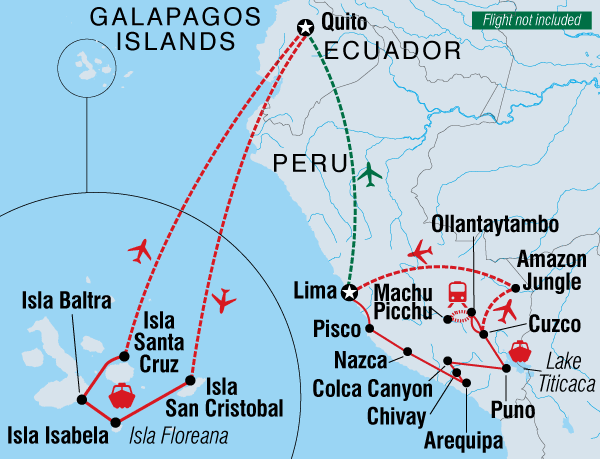Product Description
Highlights
Whether you trek the classic Inca Trail, the Inca Quarry Trail or take the scenic train route, the ancient ruins of Machu Picchu are a majestic destination, no matter how you get there. The floating islands of Uros on Lake Titicaca are a marvel of concept, construction and history. Take a boat tour on the lake and spend the night with a local family in a traditional island community. Explore Cusco, South America’s oldest continuously inhabited city. The city has ancient foundations, an interesting blend of Inca and colonial influences and endless things to see and do. The Amazon Jungle is known as the world’s lungs. Get a glimpse into a wild place with some of the largest biodiversity on Earth
Overview
Visit Peru and discover its highlights from Lima to Cusco on an exciting journey that encompasses modern cities and ancient worlds. Explore Peru’s lush Amazon Jungle, the epic Lake Titicaca and the vast Colca Canyon. Enjoy local homestays, hike the famed Inca Trail and be immersed in fascinating Peruvian culture while discovering its history buried deep within the walls of lost cities.
Amazing wildlife, both on land and underwater, is the drawcard of the remote Galapagos Islands. Tour the Galapagos’ outstanding natural beauty and interesting history by foot, boat and bike on this active adventure. Trace Darwin’s theory of evolution, spot colourful, bizarre and beautiful creatures and have an experience that is completely out of this world as you discover the incredible Galapagos Islands.
Breakfast Included: 27 Lunches Included: 9 Dinner Included: 8
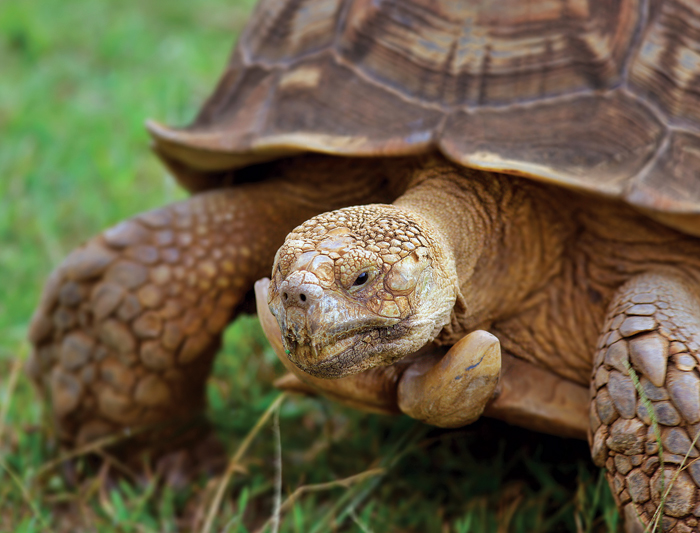
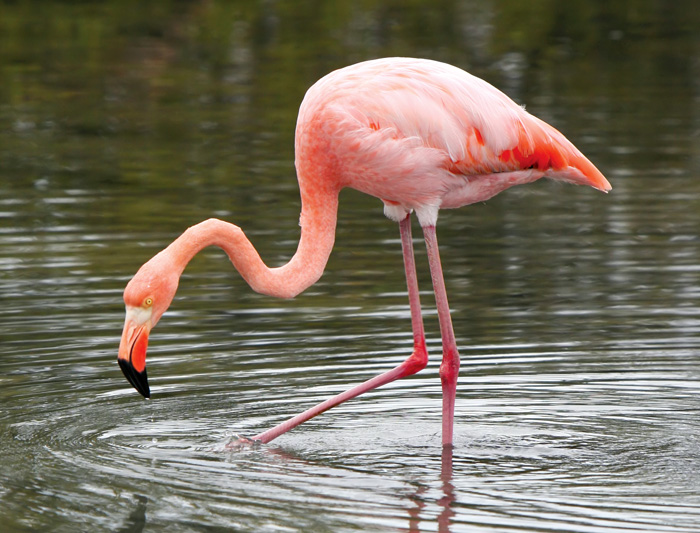
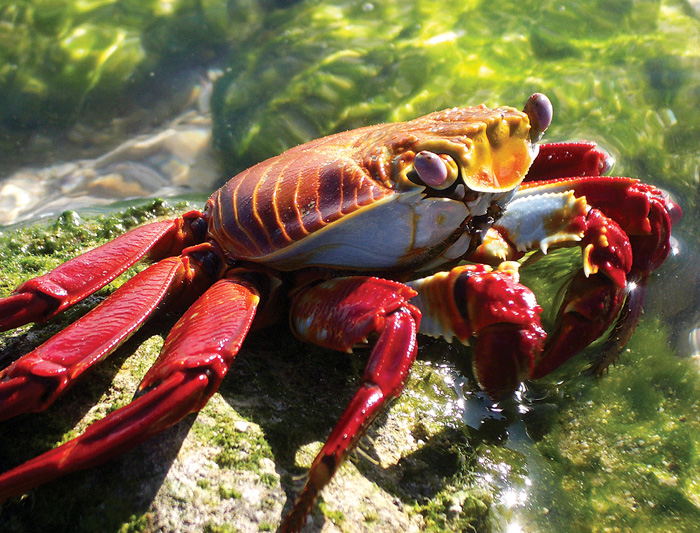
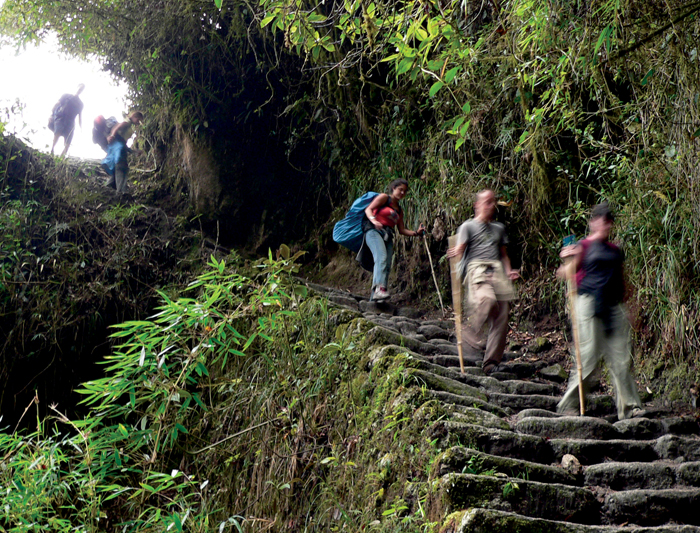
Lima
Welcome to Lima, Peru. Your adventure begins with a welcome meeting at 4 pm. Please look for a note in the hotel lobby or ask the hotel reception where it will take place. One of the most beautiful cities in South America, there's plenty to do and see in Lima. You’ll get to see downtown Lima and the historical centre on your walking tour tomorrow, but we also recommend arriving a few days early to see more of the sights. There’s the famous suburb of Miraflores, Central Park and Lovers’ Park, and the 16th-century monastery of San Francisco with its catacombs of some 10,000 remains. There are also plenty of museums including the Museum of the Inquisition, the National Museum and the Gold Museum. Be sure to have a bite of Peru's national dish of ceviche.
Pisco
Set out on a guided tour of downtown Lima, where streets are flanked with colonial mansions, palaces and churches. See the iconic Plaza Mayor with its imposing Cathedral on foot, then board a local bus bound for Pisco. The bus will stop about three or four times along the way during the four hour journey. There are no planned activities upon arrival in Pisco, but you may want to seek out a bar serving Peru's national libation – this is the birthplace of the Pisco sour, after all.
Nazca
A haven for birdlife, wildlife enthusiasts can opt to visit the Paracas National Reserve this morning for a chance to spot pelicans, red-footed boobies and flamingos on a two-hour boat tour. Otherwise, take it easy do some more sightseeing in Pisco before the drive to one of the world's most mysterious archaeological sites, the Nazca Lines. Along the way, stop in the town of Huacachina. This little settlement sits beside a small lake with dramatic sand dunes. Perhaps go sand-boarding or simply enjoy the photo opportunities. Upon arrival, explore the eerie desert graveyard of Chauchilla, where the arid conditions have naturally interred the remains of the Nazca people buried here. Visit the Nazca lines, enormous geoglyphs representing animals drawn into the sand thousands of years ago. Climb to the viewing platform, or perhaps take an optional flight over the lines for the best experience.
Arequipa
Travel about nine hours from Nazca to Arequipa by local bus. Standing at the foot of El Misti Volcano and oozing the best of Spanish colonial charm, Arequipa vies with Cusco for the title of Peru's most attractive city. Built out of a pale volcanic rock called sillar, the old buildings dazzle in the sun, giving the city its nickname - the 'White City'. The main plaza, with its cafes and nearby cathedral, is a lovely place to while away the day.
Arequipa
Spend the day in stunning Arequipa. Perhaps wander the main plaza with its lovely cathedral, many cafes and eateries. You may like to visit the Juanita Museum, which houses Peru’s famous ‘Ice Maiden’, the Inca mummy of a girl who died in the 1440s. There’s also the Monasterio de Santa Catalina, a 16th century monastery which only accepted women from well-to-do Spanish families. These nuns grew infamous for their luxurious lifestyles, each one having her own servant, splurging on fine products and enjoying frequent parties.
Colca Canyon
Today we travel about five hours by minivan to the town of Chivay. Along the way, you’ll see llamas, alpacas and vicunas – not sure how to differentiate between these adorable creatures? Your tour leader will explain the differences between them. You’ll also stop for breaks, photo opportunities and to try some local coca tea. The third stop takes you to the highest point on the tour at Patapama (4800 metres above sea level) before descending to your destination of Chivay. The town will be your base for exploring the Colca Canyon in the coming days.
Break for lunch in town and then go on a short trek in the area which will take you to the local thermal baths. From here you can either spend the evening soaking in the baths, dining on llama steak at a nearby restaurant or seeing some live Andean music at a pena (local bar).
Colca Canyon (Home stay)
Wake up early to visit the Colca Canyon. More than twice as deep as the Grand Canyon, the Colca has some breathtaking views. Here you’ll see terraced crops that have been cultivated since pre-Inca times by local villages. This is also the home of the Andean condor. Witness one of the world’s largest flying birds soar above and below you from a prime viewing point above the canyon. Later in the afternoon, visit a Colca Canyon community and meet your homestay host family. You might like to offer to help your host family with their daily activities such as planting, collecting water, peeling potatoes or preparing the family meal.
Puno
Say goodbye to your host family and board a bus for Puno. It’s a long drive (about five hours), but the dramatic views of Peru’s highlands, the Altiplano, make it an exceptionally scenic one too. Puno is located on the shores of Lake Titicaca, which you’ll explore in the coming days. Upon arrival, take the change to get aquainted with the town; Puno is known as Peru’s folklore capital. This is due in no small part to its thriving indigenous cultures, including the Aymara and Quechua. If you’re lucky enough to arrive during a festival, you’ll be treated to an elaborate parade of costumes and dances.
Lake Titicaca (Home stay)
Start the day with a tour of Lake Titicaca. Sitting 3820 metres above sea level, it holds the title of highest navigable lake in the world. Hop in a motorboat and learn about the spiritual significance the lake holds for the Quechua while cruising across its waters. Stop off at Uros Titinos, floating man-made islands made entirely from reeds and home to several families. Later, head to your homestay in the Lake Titicaca region. To get a better understand of daily life, why not help your host family with some of their daily activities. Your hosts will be happy to teach you a few words of their language, Quechua. A friendly game of soccer may also be on the cards.
Puno
After breakfast, take a one-hour boat ride to Taquile Island. The locals here make their livelihood out of textiles, with the women doing the spinning and men doing the knitting. Browse the handmade goods sold here including warm, high quality items. Next, take an uphill trek for about an hour to visit the main area of the island. After a brief stay, the boat will take you back to Puno (about three hours).
Cusco
Take a scenic bus ride across the Altiplano towards Cusco (about seven hours). Cusco is the continent’s oldest continuously inhabited city and here, colonial buildings are built upon foundations remaining from Inca times. Spend a little time acclimatising to the high altitude (3450 metres), then set out to discover some of Cusco's lesser-known sights on a guided walking tour. Visit the facade of Qoricancha temple, San Pedro market, the main square, 12 Angled Stone, Regocijo Square and San Blas Square. End the walking tour at Cusco's Chocolate museum where you'll get to sample a decadent cup of hot chocolate made from local cacao beans. There’s a small store where you can browse handicrafts and artisanal chocolate products.
Cusco
Enjoy a free day in Cusco, the heart and soul of Peru. You may like to visit the city’s many museums and archaeological sites with a boleto turistico (tourism ticket). This includes the Contemporary Art Museum, Regional History Museum, Qosqo Native Art Museum and the Inca ruins of Saqsaywaman, Q'enqo, Pica Pakara, Pisac and Ollantaytambo. The most easily accessible among these sites is Coricancha, which was once the Incan empire's richest temple until the Spanish built a Dominican church on top of it.






